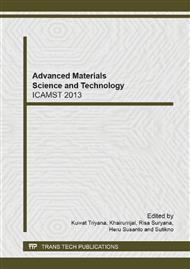p.687
p.695
p.701
p.706
p.710
p.714
p.718
p.722
p.726
A New Type of Planar Chamber for High Frequency Ozone Generator System
Abstract:
This paper proposes a new type of planar chamber ozone generation operated at atmospheric pressure, ambient temperature and high frequency. The chamber was constructed in planar type with easy adjustment using simple filler material and arrangement for different type of electrodes. A prototype was developed based on study to find the most effective geometrical electrode shape and dielectric material to produce micro-discharges without additional discharge gas, low pressure and temperature.. The works were initially carried out by theoretical analysis and finite element simulations to find the best geometrical shape for the electrode and to prove theoretical prediction, the experimental works were set up to determine the preferable dielectric to be used along with the electrode. Finally, the best combination was revealed by using muscovite mica and aluminium mesh on copper plate to start generating ozone at 785 Volt and 30 kHz. This planar prototype chamber successfully delivered the highest ozone yield more than 3000 ppm and 120 g/kWh. Due to the simplicity and low cost design, this planar chamber can be suitably used for portable and home appliance.
Info:
Periodical:
Pages:
726-729
Citation:
Online since:
February 2014
Authors:
Keywords:
Price:
Сopyright:
© 2014 Trans Tech Publications Ltd. All Rights Reserved
Share:
Citation:


